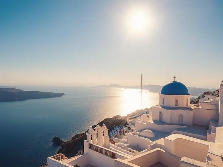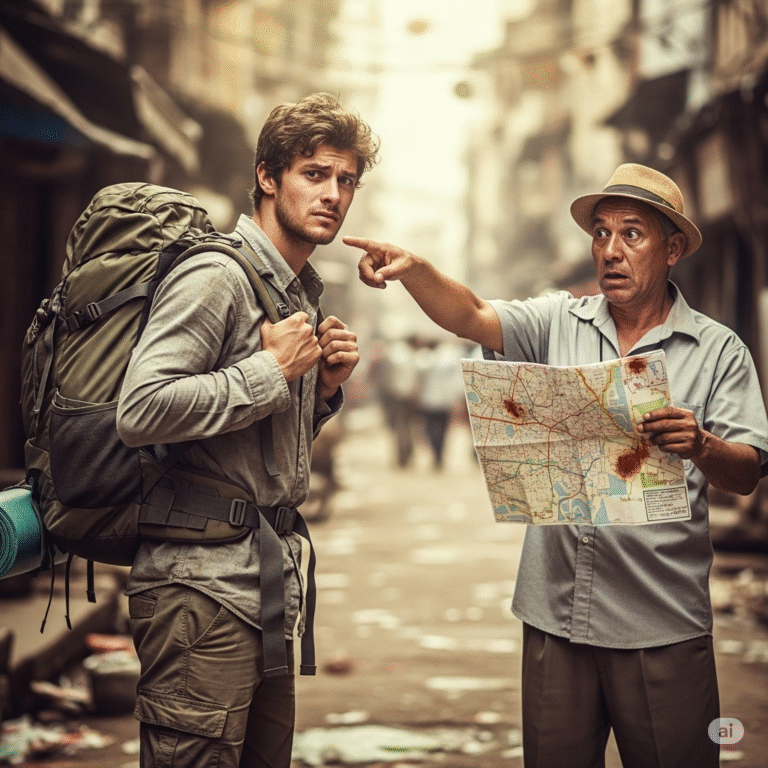
Hellas Santorini: Where Myth Meets Caldera Majesty
Santorini isn’t just a postcard; it’s a visceral experience. The moment you glimpse its caldera—a collapsed volcanic crater filled with deep blue Aegean waters—you understand why “Hellas Santorini” ignites such passion. As a Greek island veteran, I’ve seen countless travelers transformed here. It’s where cobalt-domed churches contrast against blinding white walls, where vineyards grow in volcanic ash, and where sunsets over Oia feel like nature’s grand finale.
But “Hellas Santorini” (Hellas being Greece’s ancient name) is more than aesthetics. It’s a living tapestry of 3,500 years of history, from the Minoan civilization buried under ash to today’s vibrant winemakers and artists. In 2025, the island balances its global fame with intimate moments—like sipping Assyrtiko wine in a family-owned vineyard or exploring lesser-known villages where time slows down.
Forget generic itineraries. This guide dives deep into Santorini’s soul. We’ll explore its volcanic origins, reveal 2025-local-approved spots, and share sustainable tips to protect this fragile paradise. Whether you’re a honeymooner, history buff, or solo adventurer, prepare to see Santorini beyond the Instagram filters.
Why Hellas Santorini Stole the World’s Heart
A Geological Drama Queen
Santorini’s beauty was forged in chaos. Around 1600 BCE, one of history’s largest volcanic eruptions shattered the island, creating today’s crescent-shaped caldera. This cataclysm may have inspired Plato’s Atlantis legend! The island’s layers tell this story: Red Beach’s crimson cliffs, Kamari’s black volcanic sand, and the surreal White Beach at the base of towering pumice walls.
The volcanic soil isn’t just scenic—it’s the island’s lifeblood. Vines thrive in this mineral-rich ash, their roots digging deep for moisture. Wineries like Domaine Sigalas and Santo use ancient “kouloura” techniques (training vines into low baskets) to protect grapes from fierce winds. Tasting their crisp Assyrtiko wines while overlooking the caldera? Pure magic.
Architecture That Defies Gravity
Those iconic cliff-hugging villages aren’t just pretty—they’re genius. Cubist houses painted with white lime (originally for disinfectant) reflect the fierce sun. Narrow, maze-like streets disrupt wind patterns. Even the famous blue domes of churches like Agios Spyridon in Oia serve a purpose: blue pigment was historically the cheapest!
But in 2025, preservation is key. Strict building codes ensure new developments mimic traditional styles. In Pyrgos village, you’ll see restored 18th-century mansions alongside artisanal ceramic workshops. This harmony between old and new keeps Santorini’s charm authentic.
The Sunset That Broke the Internet
Yes, Oia’s sunset is crowded. But locals know secrets: head to the less-trodden Skaros Rock in Imerovigli for equally dazzling views without the elbows. Or book a sunset catamaran cruise—floating on the caldera as the sky ignites in tangerine and lavender is next-level.
Pro tip: The best light isn’t just at dusk. Arrive early at Akrotiri Lighthouse for golden-hour photography when the cliffs glow like honey.
Must-Do Experiences in Hellas Santorini (Beyond the Obvious)
Unearth Buried History at Akrotiri
Move over, Pompeii. Santorini’s Akrotiri is a 3,600-year-old Minoan city frozen in volcanic ash. Unlike Pompeii, no human remains were found—suggesting an orderly evacuation. Wander elevated walkways past multi-story buildings with intact frescoes of antelopes and fishermen. A 2025 upgrade includes VR headsets that reconstruct daily life before the eruption.
Nearby, Ancient Thera perched on Mesa Vouno mountain offers ruins spanning 9th-century BC Dorians to Roman times. Hike up at sunrise for solitude and panoramic views of Kamari Beach.
Beach-Hopping Like a Geologist
Santorini’s beaches are a volcanic rainbow:
-
Red Beach: Accessible via a short cliff path (check 2025 stability updates). Its rust-colored pebbles and turquoise water are surreal.
-
Vlychada: A “lunar” beach with sculpted white cliffs and a chic seaside taverna.
-
Koloumbo: For adventurers—a secluded cove reachable only by boat or steep hike, with natural hot springs.
Beach Essentials 2025:
| Beach | Sand Type | Crowd Level | Best For |
|---|---|---|---|
| Kamari | Black Volcanic | High | Water sports, cafes |
| Perissa | Black Volcanic | Medium | Long walks, biking |
| Amoudi Bay | Pebbles | Medium | Seafood, cliff jumps |
Taste the Volcanic Terroir
Santorini’s cuisine is sun-drenched simplicity perfected. Don’t miss:
-
Tomatokeftedes: Fried tomato fritters made with sweet local cherry tomatoes.
-
Fava: Creamy yellow split pea puree, drizzled with olive oil and capers.
-
Fresh Octopus: Grilled or sun-dried, best enjoyed at Amoudi Bay’s fish tavernas.
For a hyper-local experience, join a cooking class in Megalochori village. Maria’s Garden teaches you to bake “megalitiko” bread in a wood oven using heirloom grains. Pair it all with a volcanic microbrew from Donkey Brewery!
Travel Smart: 2025 Hellas Santorini Insider Tips
Timing is Everything
July-August means crowds and 35°C+ heat. Shoulder seasons (April-May & Sept-Oct) offer 25°C days, blooming wildflowers, and 30% lower prices. Winter (Nov-Mar) is quiet—perfect for writers or photographers, though many shops close.
2025 Festivals Alert:
-
Ifestia Festival (Aug): A fiery reenactment of the volcano’s eruption with fireworks.
-
Assyrtiko Wine Festival (Sep): Held in Vothonas village with free tastings and live rebetiko music.
Navigating Like a Pro
-
Getting There: Fly direct to Santorini (JTR) from major European hubs. Ferries from Athens take 5-8 hours—book fast catamarans (Seajets) for comfort.
-
Island Transport: Rent an ATV (~€35/day) for village-hopping. Buses are cheap but packed. Avoid driving to Oia at sunset—park in Fira and walk.
-
Accommodation: Caldera-view suites in Oia/Imerovigli are splurge-worthy. For value, try Perissa or Kamari. 2025 Trend: Eco-cave hotels like Chromata in Imerovigli use solar power and rainwater harvesting.
Sustainable Santorini
With 2 million+ visitors annually, overtourism strains resources. Help out:
-
Water Wisdom: Take short showers. Most water is imported or desalinated!
-
Support Local: Buy ceramics from village artisans, not mass-imported souvenirs.
-
Volunteer: Join beach clean-ups via Santorini Eco Project (monthly events).
Hellas Santorini FAQs (What You’re Really Wondering)
Q: Is Santorini crazy expensive?
A: It can be. Caldera-view dinners cost €€€, but you can eat well cheaply. Try souvlaki spots in Fira (€6) or bakeries selling spanakopita (€3). Stay inland, use buses, and skip the €400 sunset suites!
Q: How many days do I need?
A: 3-4 days is sweet spot: 1 day for Fira/Oia, 1 for beaches/volcano tours, 1 for Akrotiri/Pyrgos. Add 2 extra days to unwind or explore Thirassia island.
Q: Can I visit the volcano?
A: Yes! Boat tours (€25-40) from Athinios Port hike Nea Kameni’s active crater. Swim in the thermal springs on Palea Kameni—just know the orange mud stains swimsuits!
Conclusion: Your Hellas Santorini Story Awaits
Hellas Santorini isn’t a checklist; it’s a feeling. It’s the taste of sun-ripened fava beans on your tongue, the sight of donkeys carrying grapes through vine-striped fields, and the awe of standing where civilizations rose and fell under a volcano’s shadow. In 2025, as sustainable travel reshapes the island, visitors become guardians of its magic. Whether you’re toasting with Assyrtiko at a cliffside bar or finding serenity in a hidden chapel, Santorini etches itself into you. So pack light, wander deep, and let the Aegean light rewrite your definition of beauty.





